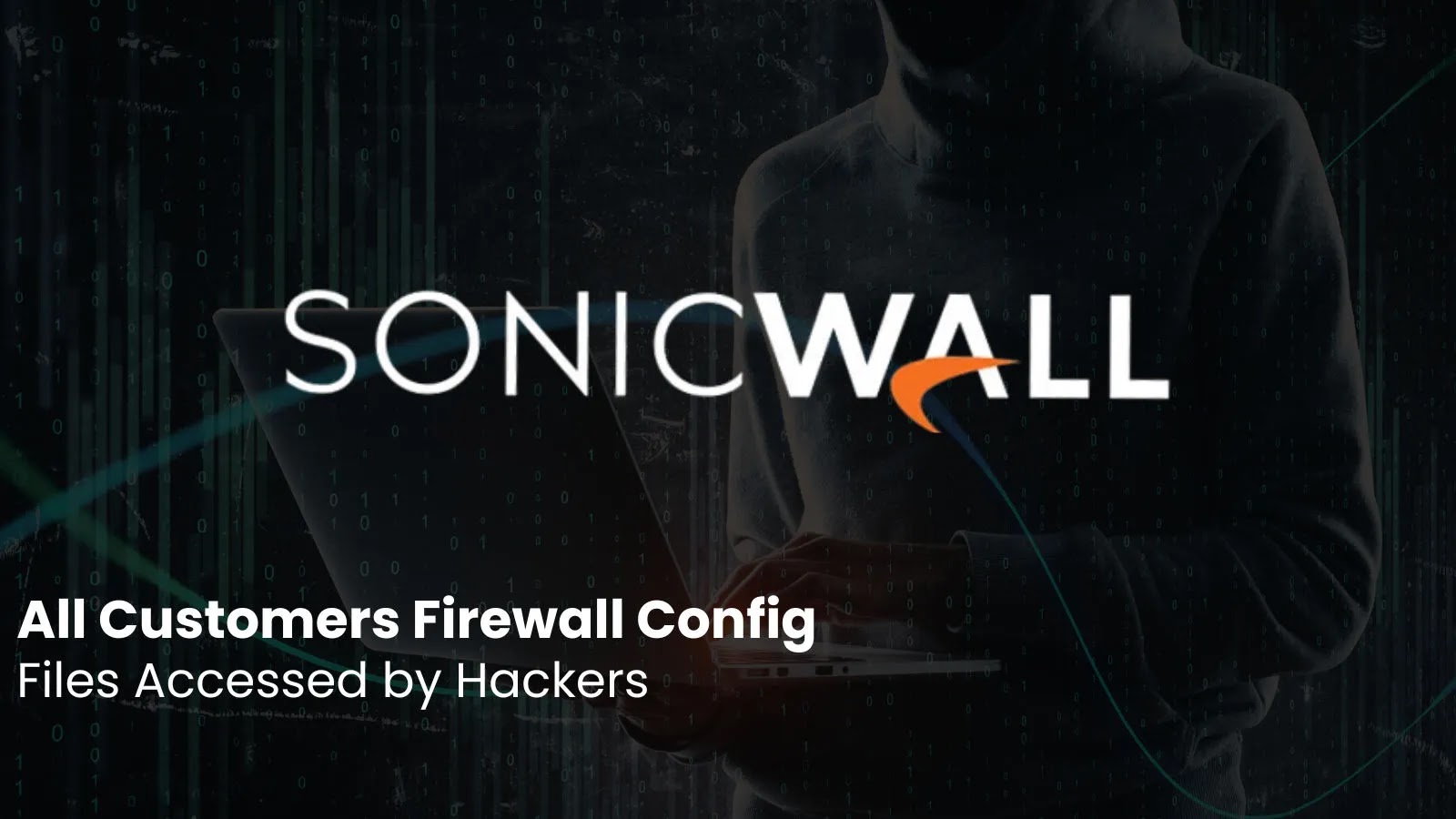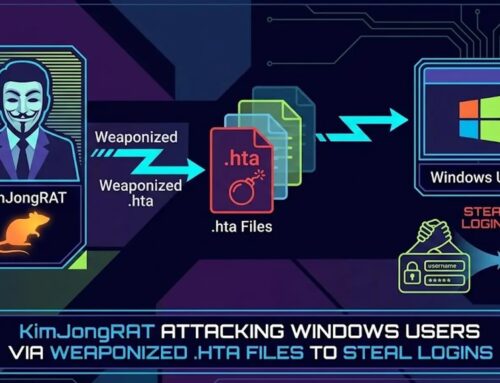
SonicWall Confirms That Hackers Stole All Customers Firewall Configuration Backup Files
SonicWall Breach: Customer Firewall Configurations Stolen, Mandiant Confirms
In a significant cybersecurity development, SonicWall has officially confirmed that an unauthorized actor gained access to and exfiltrated the complete repository of customer firewall configuration backup files. This breach, stemming from their cloud service, affects all customers leveraging the cloud backup feature. The confirmation follows a thorough investigation conducted in collaboration with the renowned cybersecurity firm Mandiant.
The implications of such a breach are substantial, potentially exposing critical network architecture, security policies, and sensitive operational details for countless organizations. Understanding the scope, potential impact, and necessary remediation steps is paramount for any entity utilizing SonicWall’s cloud backup services.
The Confirmed Compromise: What Happened?
According to SonicWall’s official statements, an investigation, spearheaded by Mandiant, definitively concluded that an “unauthorized party” successfully infiltrated their cloud service environment. The primary objective of this intrusion appears to have been the exfiltration of customer firewall configuration backup files. This means that if your organization used SonicWall’s cloud-based backup functionality for your firewalls, your configuration data was compromised.
The specific attack vector or initial point of compromise has not been publicly detailed beyond the confirmation of unauthorized access to the cloud service. However, the outcome is clear: full configuration backups, which contain intricate details about network topology, rule sets, VPN configurations, and potentially even user accounts or device settings, are now in the hands of malicious actors.
Understanding the Risk: Why Firewall Configurations are Critical
For IT professionals and security analysts, the theft of firewall configuration files represents a profound security risk. These files are the blueprints of an organization’s network perimeter defense. They contain:
- Network Topology: Details of internal and external network segmentation, IP addresses, and routing information.
- Security Policies and Rules: Specific allowances and denials for traffic flow, including ports, protocols, and source/destination IP addresses. This reveals sensitive information about services running internally.
- VPN Configurations: Encryption protocols, pre-shared keys, and access credentials for remote access and site-to-site VPNs.
- Object Definitions: Lists of network objects, service objects, and potentially user groups or schedules.
- Intrusion Prevention System (IPS) Settings: Configuration details for threat detection and prevention rules.
- Authentication Mechanisms: While not always containing passwords directly in plain text, these files can reveal how authentication is handled, potentially aiding social engineering or further attacks.
With this information, attackers gain an unprecedented advantage, enabling them to map out vulnerabilities, circumvent existing defenses, and craft highly targeted attacks designed to bypass the very firewalls meant to protect the network. It’s akin to handing over the keys and blueprints to your fortress.
Remediation Actions and Best Practices
Given the confirmed breach, immediate and proactive measures are essential for all affected SonicWall customers. While specific CVE numbers for this breach have not been made public, the impact is widespread.
- Assume Compromise: Treat all exfiltrated firewall configurations as compromised. This means any sensitive information within them (e.g., VPN pre-shared keys, administrative credentials, network specifics) might be known to attackers.
- Change All Firewall Passwords: Immediately rotate all administrative passwords associated with your SonicWall firewalls, including local accounts and any integrated authentication methods. Implement strong, unique passwords and multi-factor authentication (MFA).
- Review and Update VPN Configurations: If your firewall configurations included VPN settings, immediately change all VPN pre-shared keys and consider rotating associated certificates. Inform remote users and partners of the need to update their VPN client configurations.
- Strengthen Network Segmentation: Re-evaluate your network segmentation strategy. Ensure that internal networks are properly isolated and that critical assets are not directly exposed even if an attacker gains internal network access.
- Audit Firewall Rule Sets: Conduct a thorough audit of your existing firewall rules. Look for any rules that might grant excessive access or could be exploited given an attacker’s knowledge of your network. Consider implementing a “least privilege” approach for network access.
- Monitor for Anomalous Activity: Enhance monitoring for suspicious login attempts, unusual traffic patterns, or unauthorized access to internal systems. Pay close attention to logs for activity originating from outside your expected parameters.
- Backup Strategy Review: Evaluate your current backup strategy for critical security infrastructure. Consider diversifying backup locations, encrypting backups at rest, and implementing offline backups to mitigate similar risks in the future.
- Contact SonicWall Support: Engage directly with SonicWall technical support for any official advisories, mitigation tools, or further guidance related to this specific incident.
Tools for Enhanced Security Post-Breach
Leveraging appropriate tools can significantly aid in detecting potential exploitation and strengthening your security posture following a configuration data breach.
| Tool Name | Purpose | Link |
|---|---|---|
| SIEM Solutions (e.g., Splunk, Elastic SIEM, Microsoft Sentinel) | Centralized log management, correlation, and anomaly detection for early threat identification. | https://www.splunk.com/ |
| Network Intrusion Detection/Prevention Systems (NIDS/NIPS) | Monitoring network traffic for suspicious patterns, known attack signatures, and policy violations. | (Vendor specific, e.g., Snort, Suricata – https://www.snort.org/) |
| Vulnerability Scanners (e.g., Nessus, Qualys, OpenVAS) | Identifying unpatched systems, misconfigurations, and known vulnerabilities within your network. | https://www.tenable.com/products/nessus |
| Endpoint Detection and Response (EDR) Solutions | Monitoring and responding to threats on individual workstations and servers. | (Vendor specific, e.g., CrowdStrike, SentinelOne) |
| Password Managers / Vault Solutions | Securely store and manage strong, unique credentials for all systems. | https://www.lastpass.com/ |
Key Takeaways for Organizational Security
The SonicWall configuration backup breach serves as a stark reminder of the persistent and evolving threats in the cybersecurity landscape. Even established security vendors are targets, and the compromise of cloud services holding critical infrastructure data carries profound implications. Organizations must:
- Prioritize Vendor Security Posture: Actively assess and monitor the security practices of all third-party vendors, especially those managing critical data or infrastructure.
- Implement Defense in Depth: Relying solely on one layer of security is insufficient. A multi-layered approach, including strong authentication, network segmentation, robust monitoring, and incident response plans, is crucial.
- Regularly Audit Configurations: Periodically review firewall rules and network configurations to ensure adherence to security policies and identify potential vulnerabilities.
- Data Encryption: Ensure critical data, especially backups, is encrypted at rest and in transit, both internally and when stored by third-party services.
- Prepare for the Worst: Have an incident response plan in place that accounts for potential data breaches, even from trusted vendors.
This incident underscores the dynamic nature of cybersecurity threats. Vigilance, proactive measures, and a commitment to continuous security improvement are non-negotiable for protecting organizational assets in today’s digital environment.




